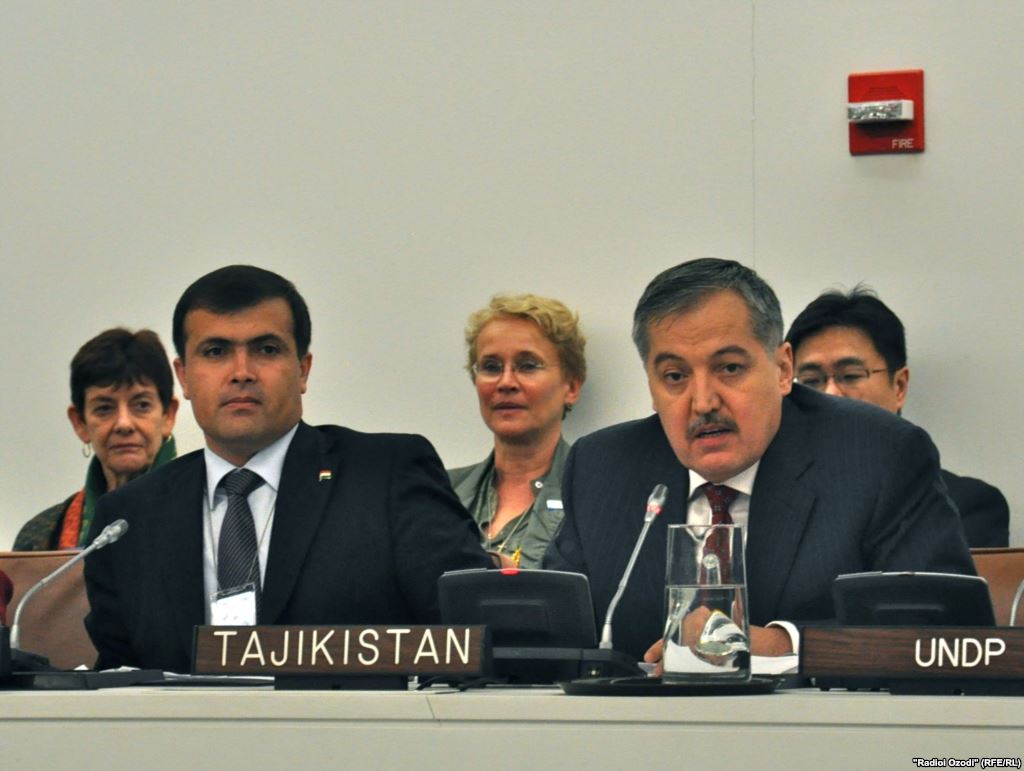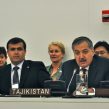
Rahmon Appoints New Ministers of Defense and Foreign Affairs
Publication: Eurasia Daily Monitor Volume: 10 Issue: 225
By:

On November 30, Emomali Rahmon, the newly re-elected president of Tajikistan, held the first cabinet meeting of his new administration (Ozodi, November 30). In all, 22 new major appointments were made and the average age of cabinet members dropped from 56.7 to 52. The two most consequential appointees were the minister of defense and minister of foreign affairs.
As the new head of the defense ministry, Sherali Mirzo replaced the 64-year-old Sherali Khairulloyev, who had held the position for 18 years (BBC Tajik, November 20). The 46-year-old Lieutenant General Mirzo had previously commanded Tajikistan’s border guards. Mirzo was born in 1967 in the southern district of Hamadoni (formerly Moskovskiy district). He went on to graduate from the Perm High Military Command Academy and joined the newly independent armed forces of Tajikistan in 1994 (Faraj, November 22). During the Tajikistani civil war, he commanded troops from the district of Vose where, according to Mahdi Sobirov, a former colleague of Mirzo, he fought against opposition forces in Tavildara and Khovaling districts. He later spent four years studying at the Military Academy of the General Staff of the Armed Forces of Russia (Ozodi, November 20). During 2005–2006, he served as Tajikistan’s deputy minister of defense before being moved to the border guard service. Tajikistan’s border guard is not part of the Ministry of Defense, but rather falls under the authority of the State Committee for National Security (SCNS)—the Tajikistani successor to the KGB.
Given his youth, some Tajikistani pundits have questioned why he was promoted over more senior generals. Some believe that Mirzo’s experience with the border guards—a unit which has traditionally received the bulk of Western security assistance and training from the United States and the North Atlantic Treaty Organization (NATO)—is an indication of the government’s desire to increase military cooperation with the West in anticipation of the 2014 US withdrawal from Afghanistan. Mirzo will inherit an anemic military, which faces not only threats from neighboring Afghanistan and Uzbekistan, but lingering internal threats as well. Under the tenor of Khairulloyev, the military was heavily criticized for corruption, bungled operations such as those witnessed in Khorog in 2012 and Rasht in 2010, and the widely resented institution of forced conscription known locally as “oblava” (Ozodagon, November 20).
On the diplomatic front, Foreign Minister Hamrokhon Zarifi was replaced by Sirojiddin Aslov (BBC Tajik, November 30). In contrast to Khairulloyev, Zarifi, who had previously served as ambassador to the United States from 2002 to 2006 before being appointed to the Ministry of Foreign Affairs (MFA) in 2006, was relatively popular in Tajikistan. Some analysts credit him as the architect of Tajikistan’s multi-vector foreign policy that sought to check Russian influence (Ozodi, December 1). Others have speculated that his somewhat pro-US stance was not well received in Moscow and may have contributed to the complications surrounding the negotiations to extend Russian basing rights in Tajikistan (BBC Tajik, November 30; Ozodagon, November 29).
Aslov, Zarifi’s replacement as foreign minister, was born in 1964 in the district of Temurmalik and served as Tajikistan’s ambassador to the United Nations from 2004 until his appointment to the MFA (Faraj, December 2). Prior to heading his country’s delegation to the UN, he held a variety of positions, including deputy minister of Tajikistan’s Environmental Protection Ministry and Dushanbe’s representative on the Executive Committee of the International Fund for Saving the Aral Sea (IFAS). During his eight years at the UN, he was at the forefront of Tajikistan’s push to garner international support for the Rogun hydroelectric project. Aslov’s experience with international institutions and environmental issues indicates that Rahmon is keen on keeping the issue of Rogun at the forefront of his agenda.
Many local analysts are fond of likening Rahmon’s new appointments to the chess move known as “castling,” in which two pieces merely switch place on the board. The ruling elite are still drawn from a small group of Rahmon’s clan who hail from southern Tajikistan in and around the town of Kulob. Such cronyism exacerbates Tajikistan’s regional tensions and heightens the possibility of instability. Tajikistan’s last two major flare-ups of violence, which were ostensibly sparked by incidents of criminality (Khorog in 2012) and terrorism (Rasht in 2010), in fact, had strong regional undertones (see EDM, July 27, August 1, 2012).
If they prove their loyalty, Rahmon is willing to appoint non-Kulobis to national positions. However, such appointments are to largely honorific posts such as prime minister—a position that is commonly viewed as “belonging” to the northern city of Khujand (Leninabod). The Khujand region has traditionally competed with Rahmon and his Kulobi clan. Recently, Oqil Oqilov, the long-serving Khujandi prime minister, was replaced by Qohir Rasulzoda—himself the former governor of Sughd province (BBC Tajik, November 23). Ministries with actual power, such as the Ministry of the Interior (headed by Ramazon Rahimov) or those that are potentially lucrative such as the Ministry of Finance (headed by the newly appointed Abdusalom Qurbonov), are staffed by Rahmon’s Kulobi inner circle (Asia-Plus, December 2). Time will tell if Rahmon’s new appointees possess not only the correct geographic credentials, but also the competence to help guide Tajikistan through the many challenges it faces in the next few years.




